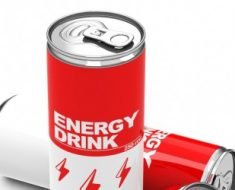

Though prices are not climbing as quickly as they did between 2002 and 2013—when the average cost of insulin therapy tripled—the average price of insulin has increased by 64% since 2014. Since the beginning of 2017, when drug prices became a key part of White House agenda, insulin prices have increased by 9% on average.
The most recent price increases are on insulins made by Sanofi-Aventis and Novo Nordisk, which raised prices by as much as 3% in May and July, respectively. Insulins by Sanofi-Aventis saw a price bump immediately after the manufacturer vowed to limit annual price increases to a rate below medical inflation (effectively 5.4%). Novo Nordisk promised just months before to cap annual price increases to single-digit percentages.

The analysis on 22 insulin brands across manufacturers and insulin types—short-, intermediate-, rapid- and long-acting—shows that manufacturers are still raising insulin prices, and costs now vary by as much as 10 times depending on which insulin you take. Here, we’ll walk you through how each brand stacks up and how you can get the best deal on these life-saving medications.
This GoodRx analysis is based on a representative sample of US prescription fills (not GoodRx fills) and comes from several sources, including pharmacies and insurers. The reported prices per insulin unit are based on cash prices, the so-called “usual and customary” prices or retail prices at the pharmacy (not including insurance copays or co-insurance).
A note about insulin use:
One insulin unit can be defined as the amount of insulin it takes to lower blood glucose by 50 mg/dL, although each individual’s response is highly variable. Someone with type 2 diabetes may start with one unit of insulin per one to two kilograms of body weight per day, which equates to about 40 units of insulin per day for a 70-kg person.
People with type 2 diabetes are often treated without insulin—or perhaps one type of intermediate- or long-acting insulin—as type 2 diabetes is a disease where the body is resistant to insulin’s effects. For those with type 1 diabetes, an autoimmune disorder that kills pancreatic cells that make insulin, more insulin of different types is needed. It’s common, for example, for a person with type 1 diabetes to use both a mealtime (rapid- or short-acting) insulin along with a basal (intermediate- or long-acting) insulin.
How do insulin prices compare today?
1) Traditional insulins are cheaper than modern insulins
Prices of Novolin and Humulin (traditional short- and intermediate-acting insulins) have turned south, while prices of modern rapid- and long-acting insulins continue to go up. On average, traditional insulins now cost less than half of what modern insulins cost.

Why? Understandably, traditional insulins have always been cheaper than their newer competitors. Modern insulins are synthetic analogs of traditional insulins, which makes them more difficult to produce.
Additionally, when patents on Humulin and Novolin expired around 2000—after protecting these brands from competition for nearly 40 years—manufacturers Eli Lilly and Novo Nordisk had to test new pricing strategies to remain competitive.
Last March, for example, Novo Nordisk partnered with CVS to offer Novolin at roughly 80% less than its normal list price. Both Novo Nordisk and Eli Lilly have also worked with Walmart to heavily discount Novolin and Humulin under Walmart’s ReliOn line of insulin products.
Retail partnerships haven’t been the only strategy. Last May, Eli Lilly broke from their routine of increasing Humulin prices every six months and has since left prices alone. In fact, prices of traditional Humulin and Novolin insulins, their rapid-acting analogs (Humalog and Novolog) and their mixed products (e.g. Humulin 70/30, Novolog 70/30) have not gone up since then.
Novolin R and Novolin N are currently the cheapest traditional insulins—by as much as 75% compared to other options.
Cash Prices of Traditional Insulins (July 2018)
2) Vials are cheaper than newer dispensers
In 1985, Novo Nordisk introduced the first insulin pen, making it more convenient for patients to store and self-inject insulin—but it came at a price. Now, rapid-acting insulins are 30% more expensive if you buy them as pens versus vials. It’s not just rapid-acting insulins either; the price of Humulin N, for example, more than doubles if you choose to use a Kwikpen instead of a vial.

New dispensers make insulin more expensive. We’re seeing that again with Afrezza, a relatively new rapid-acting insulin, and the first and only insulin to be delivered as an inhalable powder. One unit of Afrezza’s insulin can cost as much as three times other rapid-acting insulins.
Cash Prices of Rapid-Acting Insulins (July 2018)
3) Follow-ons (“generic insulins”) cost a little less than brands
You’d think follow-ons, what we call the generic versions of insulin, would be much cheaper than brand-name insulins. However, our current follow-ons, Basaglar and Admelog, only offer minimal savings.
Basaglar, a long-acting insulin approved in 2016, is the follow-on to Lantus, andAdmelog, a rapid-acting insulin approved in 2017, is the follow-on to Humalog. Today, Basaglar costs about 15% less than Lantus on a per insulin unit basis. Admelog, similarly, costs 12% to 15% less than Humalog, depending on the dispenser. By cash price alone, both Basaglar and Admelog are still the cheapest options of their insulin groups.
4) Extra features can come with a high price tag
Innovations usually translate to higher prices, but not always. In the last couple years, we gained four new long-acting insulins, each with their own special feature.
First, there’s Tresiba, an ultralong-acting insulin that stays active for up to 42 hours. For this bonus feature, it costs about $115 per 3-ml pen, or 39% more than fellow long-acting insulin, Basaglar.
Then, there’s Xultophy and Soliqua 100/33. Both contain a long-acting insulin and another non-insulin diabetes medication. Xultophy is a mix of insulin degludec plus liraglutide (the same active ingredient in Victoza), and Soliqua is a mix of insulin glargine plus lixisenatide (the same active ingredient in Adlyxin). Soliqua and Xultophy are more than the double the price of cheaper alternatives like Basaglar and Tresiba, which have the same exact kind of insulins.
Lastly, there’s Toujeo, a good example of when a special feature doesn’t cost more. It has the same insulin as Lantus, but is three times more concentrated. For people who need more insulin than average, that’s a convenient feature. At first glance, Toujeo’s price seems expensive at about $150 per 1.5-ml pen, but one insulin unit actually costs about the same as one unit of Lantus—it’s just that you get more insulin with each injection.

What’s next for insulin prices? At the end of 2017, long-acting insulins started to get more expensive overall, after having enjoyed stable prices since 2015. As we mentioned, Novo Nordisk and Sanofi-Aventis raised their insulin prices again, despite promising to help reign in drug prices.
Specifically, Novo Nordisk bumped up prices of Tresiba and Levemir in January of this year, and then again in July. Sanofi-Aventis raised prices for Toujeo and Lantus in October 2017, and then again in May. Xultophy and Soliqua both saw price bumps back in January of this year.
As might be expected, Novo Nordisk and Sanofi-Aventis did not limit their recent price increases to long-acting insulins. Rapid-acting insulins Apidra and Novolog saw new price increases last month. All together, prices of long-acting insulins increased by about 7% since September of last year.
Cash Prices of Long-Acting Insulins (July 2018)
Ways to save on insulin
It’s difficult to predict where drug prices will be in the future, but if you take insulin, we hope our analysis gives you some ideas for how to talk to your doctor about affordable options. Here are more ways you can save:
Source: Read Full Article





